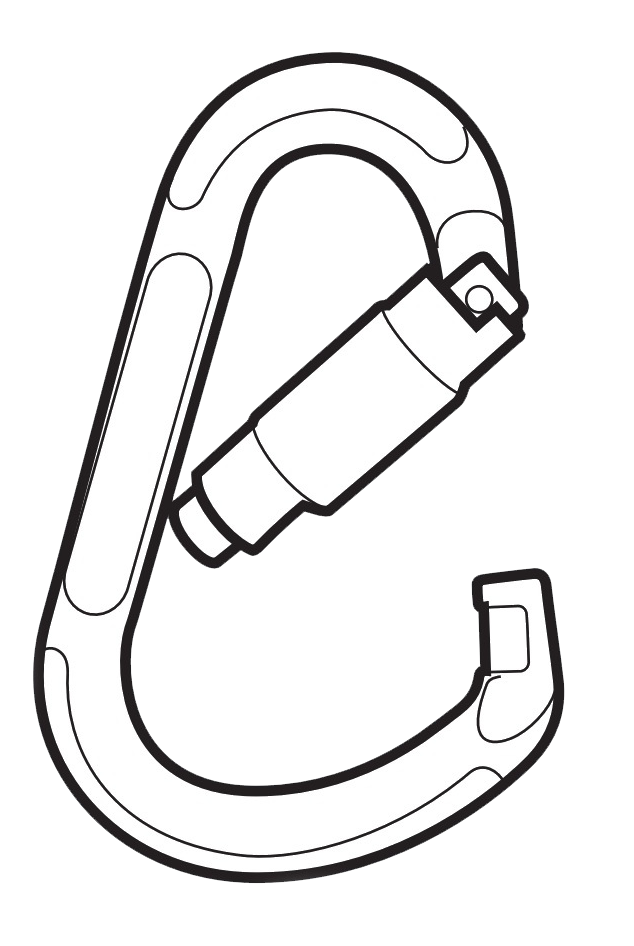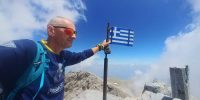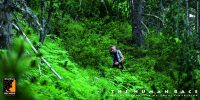Michiel Panhuysen (Mig)
Climbing Kopsi Profitis Ilias
Strategical considerations
SEPTEMBER 11, 2021 | LITOCHORO | 10 MIN

N 40°06'13.7"
E 22°21'17.9"
Kopsi Profitis Ilias is one of ridges that lead to the mayor peaks of Mount Olympus. Kopsi in Greek language means ‘ridge’. Other more or less known ‘kopsis’ on Olympus are K. Barbalas, K. Xerolaki (Naoum), K. Skolio and K. Christakis. This kopsis are not frequently climbed. The approach is not always obvious and they are all on steep and demanding terrain. The elevation gain varies from about 1500 to 2500 m, from bottom till top. Barbalas and KPI have a 2500 m gain. KPI is the most challenging of all this kopsis. Together with Christakis it’s probably the least frequented route on the ridges. In September 2021 I prepared together with Greg Olesiak for a semi-fast KPI project.
Guest on the Runnin' Greece website: Michiel Panhuysen and his text about our shared experience on Kopsi Profitis Ilias on Olympus.
My 55 Peaks

Olympus has 55 peaks higher than 2,000 m. If you combine them all into one route, you will create a line 100 km long and an elevation gain of about 8,000 m. I ran the entire route. It took exactly 40 hours, including about 5 hours for sleep.
READ MORE
preparation
When we prepared for KPI our first challenge was to find valuable information: route description or gpx files, information about the rock climbing sections (difficulties, bolting, how to find, etc.), testimonials/ reports, estimations of timing and – related to this – what gear to take (without bivy or with, sleeping bag? , 1/2/3days food and water?, hardware/ropes? From the little information we had we considered that there were roughly two options, with consequences for the gear to take with us. First option would be the one bivy+ one night refuge option. For this option we would need a lot of equipment to carry. The other option would be the lighter version. Climbing in one day + sleeping in the hut and return the second day. In English language there was no information. We found online the perfect Greek booklet of Vasilis Mamouris about some unknown routes on Olympus, with a description and picture with indication of KPI and we were very happy.
But when we translated the information in English (Google translate) we were not able to figure out how much time it would take us and if all the climbing sections were real climbing sections with rope or rather scrambling. For us this was important information. When big part of the rock sections would be accessible without rope we would gain a lot of time. And less time would mean less weight. Which would again make us faster.

We could not figure out how the upper part of the route for us would be (at 2000 m starts the more technical challenging part). But for the lower forest part we could make a clear plan. We estimated that the trail through the forest from the EOS Vrontou ‘Mountain hut’ (at the village of Vrontou, at 300 m elevation) where we parked our car up to Mesi Nisi and further up to 2000 m elevation would take us about 4 hours. 1700 m is doable for us in less than 3 hours (Greg and me we have both a past as mountain ultrarunners, Greg has quite some mountaineering experience, Mig has a lot of rock climbing experience), but the terrain is very steep and we decided to take a semi heavy backpack, so 4 hrs would be more reasonable, till 2000 m, the start of the climbing. How long the climbing part from 2000-2700 m would take us was not sure. I estimated a safe 7-8 hours. So we finally started our KPI project with the idea to climb on day 1 from Vrontou to the top in 12-14 hours and descend on day 2, after spending the night in the Apostolidis mountain hut. But when we started we were not 100% sure we would make it in daylight to the hut. Since the daylight period was about 13 hours in September we decided to start just before sunrise. We needed every bit of time.
equipment
We took in our backpack food for a one day climb (12-16 hours) 3 l of water (for 2 persons), sleeping bags (for in the hut), cloths, helmets, a 8.3 mm 60 m rope (with idea to take it double to climb 30 m pitches), 3 camalots, some nuts, schlings, 8 alpine QD’s (only the most necessary, we thought) and some carabiners. Greg climbed on hiking shoes, I took some old friction climbing shoes. This would allow us to climb relatively safe max UIAA fith degree (V) pitches. Our gear-choice was a wild guess, a balance between light (is speed) and ‘minimalistic safe’. We did not take pitons, hammer, extra QD’s or a full rack of cams (weight).
Kopsi Barbalas and the end section of Kopsi Profitis Ilias on the far left.
Olympus
Mythical Trail

READ MORE
action
Because we kept our bags relatively light, we knew the lower part of the approach and because we have some experience in fast hiking in steep terrain, we were at 2000 m in about 3,5 hours. The first climbing section (30 m, V) resulted to be no real challenge. We found two bolts and a piton that directed us in the right direction. After this first climbing section we did not use the rope anymore. The other climbing sections (1 x 30m III, one x 30 m IV) were more safe without rope, because the terrain is very lose. Here the choice rope/no rope is up to each individual climber. Using a rope causes more falling stones and rocks. The challenges were mainly route finding (clear sight is necessary for orientation, the use of the Mamouris picture was very helpful), and the lose terrain. We experienced several smaller and bigger stone avalanches, caused by ourselves. We strongly recommend climbers on KPI a helmet, extreme caution and avoiding to climb above 2000 m when other teams are ahead.
Because we were relatively light, did not use rope and took care not to make any navigational mistakes, we were able to climb the second section in a little bit more than 4 hours. We were at the church at Profitis Illias top around 8 hours after we left the car. Fast and light.
Since we were strongly ahead of our schedule we decided to descend to the refuge (10 minutes), eat lunch and start our descend to Vrontou the same day by Kopsi Barbelas, a route that we both knew very well. About 13 hours after the start of our journey we were back at the car.
conclusion
So in short: to climb KPI in a team you have to make some basic decisions based on assumptions (speed, time, gear, hardware, etc.). Part of the decisions are ‘free choices’, part of the decisions depend on your physical condition, climbing skills or other like navigation skills.
The situation changes if one team member knows the route. This helps to speed up timing and can have influence on the choice of gear. Another option is to climb KPI solo. Soloing means going light in this case. No rope and climbing gear, only helmet and maybe extra climbing shoes. This would result in minimal climbing time, so a total climbing time of 6-8 would be realistic, especially in case of a ‘repetition’ of the route. It’s obvious that a climber that prepares for a 6-8 hours journey brings a way lighter (faster) backpack than a team that is prepared for a bivy. If the rock climbing parts are doable without protection? Of course this depends on the skills of the climber. The question only counts for the first climbing section. The 30 m section counts one or two UIAA grade V moves. Mamouris guidebook even states this difficult moves can be avoid by climbing more to the right after the first 10 m, making this section considerably easier.
I think a strong mountaineer can run and climb KPI without technical gear (only food and clothes and helmet) in 6 hours, under ideal conditions. After a break he/she could start the downhill in about 2-3 hours, allowing a total time around 10 hours. Who will take the challenge?
Description of Kopi Profitis Ilias route, gpx file and more photos you can find on our other website Forgotten Olympus. Many other forgotten paths from Olympus on the same site as well.







